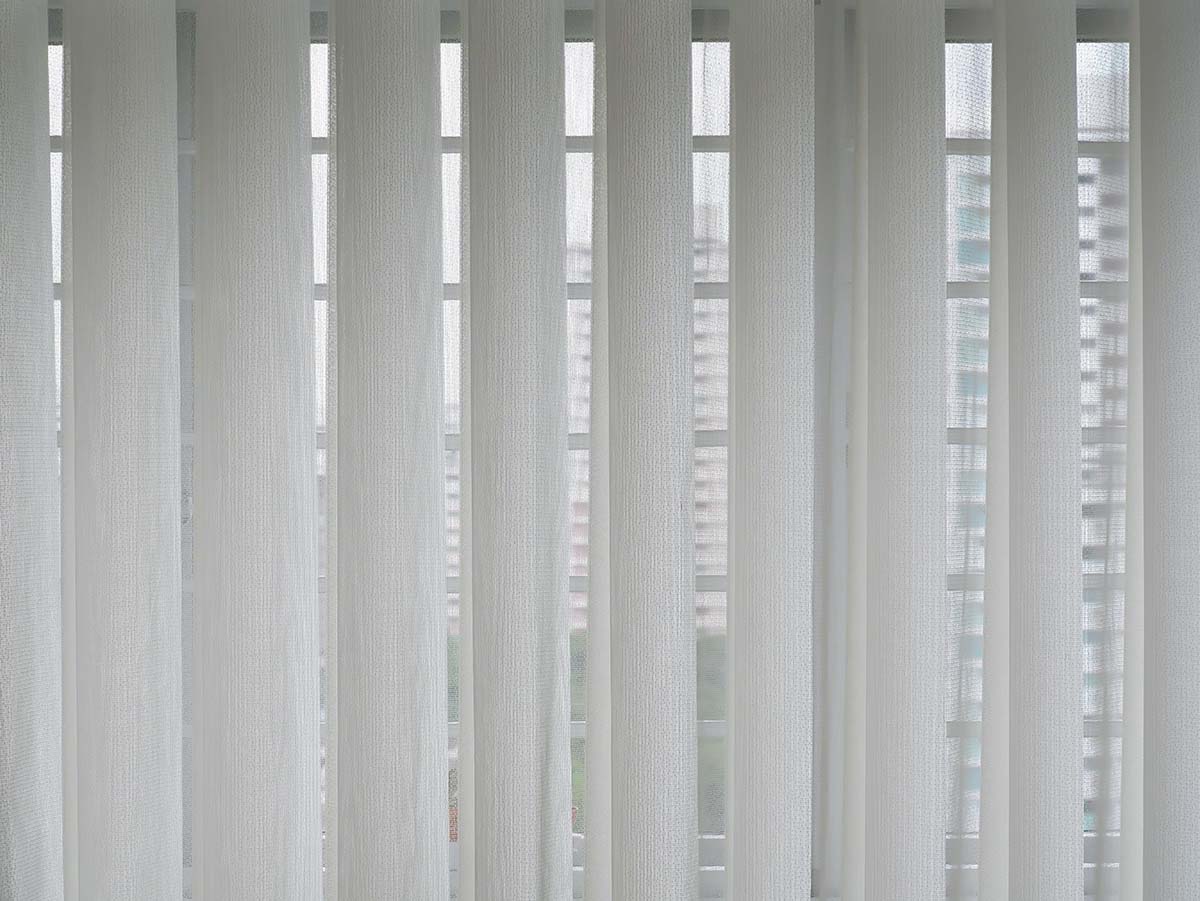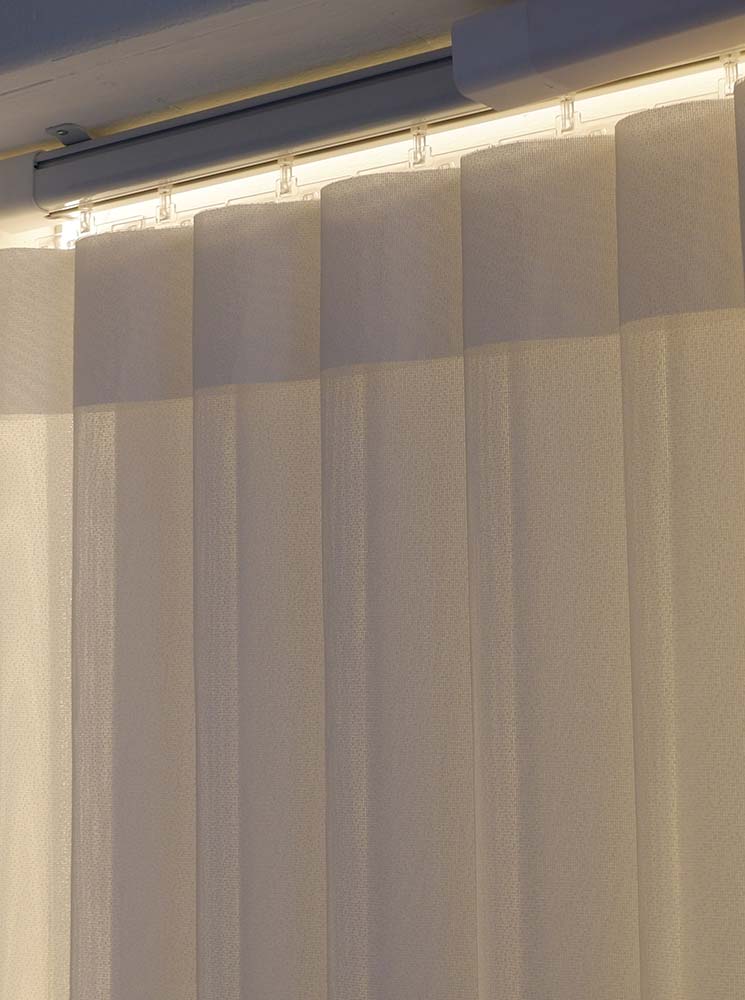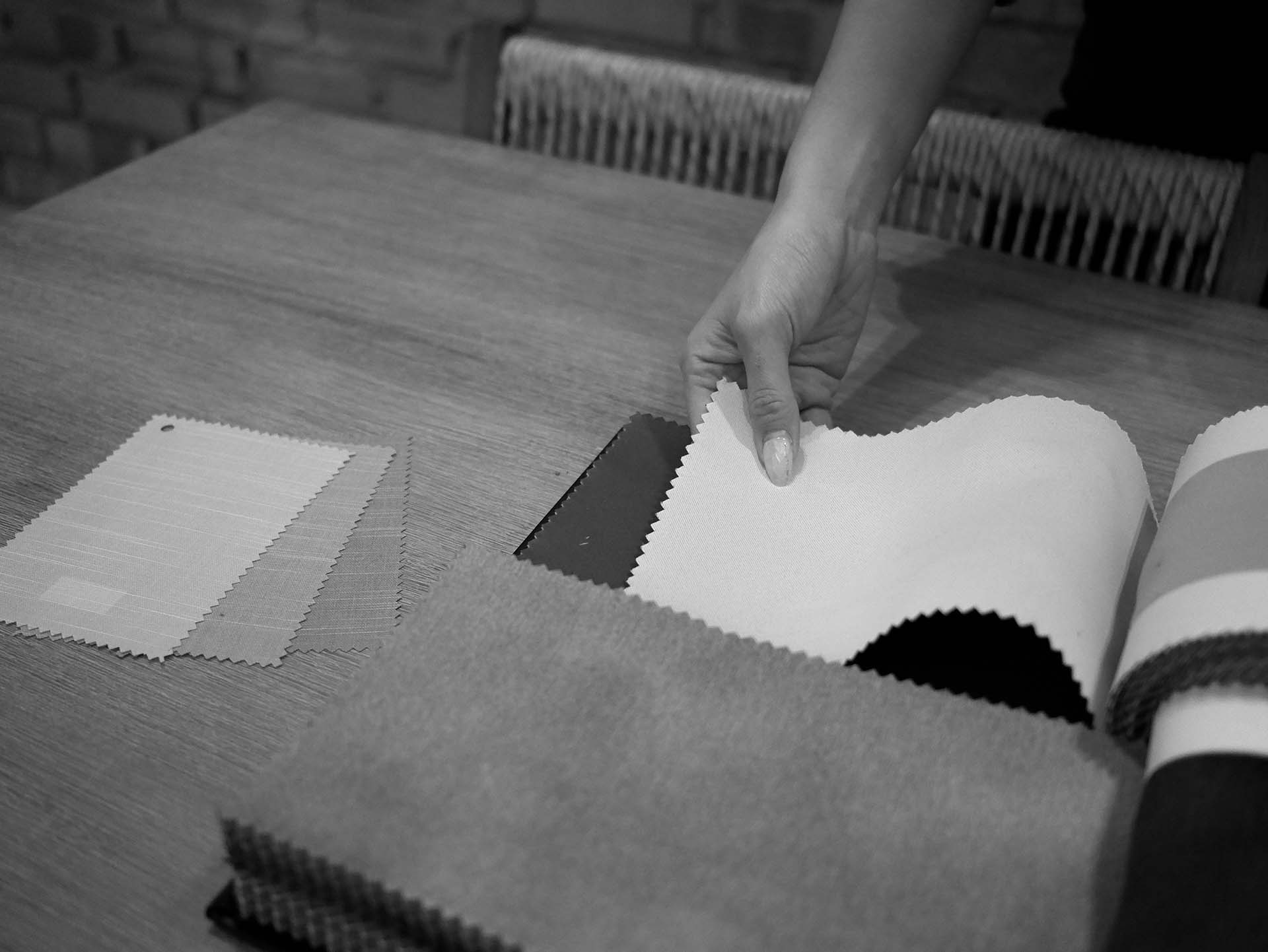

Vertical Blinds combines structure with softness. Made up of rotating fabric vanes with a secondary sheer layer, they allow you to control light and privacy while maintaining a soft finish.
The blinds can be drawn fully open or closed along the track, much like curtains – ideal for wide windows and sliding doors. The vanes themselves can also be rotated: at a 0-degree angle, the dimout or blackout vanes sit perpendicular to the window while the sheer backing runs parallel, gently filtering daylight into the room. A 90-degree rotation closes the vanes fully for greater privacy and light blocking. This flexibility makes vertical sheers both a practical and beautiful choice.
Vertical blinds are sometimes known as vertical sheers, ripple curtains, and dream blinds.
Properties
Two-in-One Light Control
Features both sheer and opaque fabric layers, allowing a soft glow during the day and added privacy when needed.
Curtain-Like Movement
Can be fully drawn open or closed along the track, just like traditional curtains — ideal for wide openings and sliding doors.
Rotating Fabric Vanes
Adjustable vanes rotate to control brightness and privacy, from filtered light to near-full coverage with a simple twist or smart command.
Fabrics

Blackout (with Sheer Layer)
Opaque fabric vanes block out most external light when rotated closed, providing strong privacy and low light levels. When vanes are open, the integrated sheer layer allows light to filter through gently, maintaining softness without exposing the interior.

Dimout (with Sheer Layer)
Dimout vanes offer a softer level of light control — they reduce glare and maintain privacy while still letting in ambient daylight. When closed, they create a warm, diffused atmosphere without full darkness. The sheer layer adds texture and filters light even when the vanes are open.

Opaque with No Sheer Layer
A traditional take on vertical blinds, these fabrics consist of solid vanes with no sheer layer. When rotated closed, they block out light and provide privacy. When rotated opened, they allow light in, but without the sheer effect. A straightforward, functional choice for offices, utility spaces, or minimalist interiors that prioritise no-frills light control.
When Should You Choose Vertical Blinds?
Vertical blinds are a unique hybrid between curtains and blinds. They offer the softness and appearance of curtain fabrics, especially with their full-length vertical form and the way they gather neatly to the sides. At the same time, their fabric vanes function much like the adjustable slats on venetian blinds, giving you precise control over light and privacy. In many ways, vertical blinds represent the best of both worlds — but there are also important factors to consider.
Choosing Vertical Blinds Over Curtains
Vertical blinds provide similar full-height coverage and lateral movement, but with the added benefit of adjustable vanes. Rotating these vanes allow you to fine-tune lighting without sacrificing privacy. In that sense, they function like a built-in day-and-night curtain system – all in one layer.
They also stack more compactly than traditional curtains, making them a great choice for spaces where bulk at the sides of a window or door is a concern. However, due to small gaps between the vanes even in a fully closed rotation position, vertical blinds can’t achieve full blackout the way layered curtains can.
Choosing Vertical Blinds Over Other Blinds
The decision to choose vertical blinds over other blind types often mirrors the same considerations as choosing curtains over traditional horizontal blinds. While roller, Roman, Venetian, or zebra blinds are known for their sleek, compact profiles, they also introduce strong horizontal lines that can visually break up a space — especially when drawn across large windows or full-height openings.
Vertical blinds, by contrast, reinforce a sense of height and flow. The uninterrupted vertical lines of the fabric vanes draw the eye upward, making rooms feel taller and more open. This verticality brings a sense of softness and structure that adds visual balance to many interiors — particularly those that value flow and proportion, such as quiet luxury, coastal contemporary, or soft industrial spaces. For large sliding doors or wide windows, this vertical treatment provides continuity and elegance where horizontal slats might feel cluttered or disjointed.
Functionally, vertical blinds also offer side-draw access — something the other blinds can’t match — making them more practical for areas that require frequent movement, like balcony doors. And unlike Venetian blinds, which can feel mechanical and segmented, vertical blinds maintain a calmer, more cohesive appearance, all while offering the same level of light and privacy control.
If you’re after a balance between the clean lines of modern blinds and the softness and drape of fabric, vertical blinds offer a versatile, design-forward solution.
Ready to visit?
- Experience our fabrics – feel and see how they move in natural light.
- Explore full-sized curtains and blinds in a real setting.
- Try out motorized and smart systems before you decide.
- Get personalised advice from our team.
- Discover combinations that work for your space, lighting, and style.

